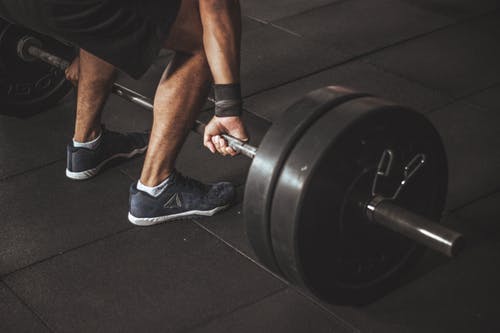When it comes to running fast, it’s important to move your limbs quickly and to exert force against the ground. There’s a debate amongst sprint coaches about whether it’s possible to improve the ability of your limbs to move quickly, but it is very possible to increase the amount of force that is being exerted against the ground.
An elite 100 meter sprinter may be producing horizontal velocities in excess of 12 meters per second and may be producing more than 60 watts of power per kilogram of body weight. This hopefully indicates how important it is to be able to exert force against the ground when sprinting.
There are a number of tools that can be used to enhance the ability of the athlete to exert force against the ground. This includes technique, plyometrics, general strength training, and special strength training.
Technique:
Sprinting technique is meant to encourage an athlete to exert force against the ground. This is done by encouraging the athlete to lift their thigh in front of their body until it is parallel to the ground (i.e. “high knees”). By doing this, the athlete is able to use the large glute muscles to drive the leg towards the ground, use the hamstring muscles to extend the hip as the leg is driven down, and use the quadriceps to extend the knee – all at the same time. By contrast, an individual who is jogging might be extremely energy-sparing in their movements and may just barely lift their feet off the ground as they jog, this would stress the hamstrings somewhat (there is some degree of knee flexion during this movement) but would not really bring glutes, quadriceps, or lengthened hamstrings into play – all of which limits force application severely.
Technique drills that train and reinforce this movement pattern include high knee walks and skips, A drills, and B drills. Normally these are all used as part of the athlete’s warm-up.
Plyometrics:
One of the best plyometric exercises to develop exerting force against the ground is bounds. Bounds can be done for time, distance, or height. For example, how many bound does it take an athlete to clear 20 meters? Or, how quickly can they perform bounds over 20 meters? Or, focus on the height of the bound as opposed to any other variable. This versatile exercise reinforces the high knee motion and trains exerting force against the ground in a sprint-specific manner. Sprinters may use these for up to 100 meters, but most athletes will benefit with 10-20 meters.
General Strength Training:
An athlete must have strong legs in order to exert force against the ground. This is developed via heavy squats, deadlifts, and hip extension exercises. In addition, athletes need to learn how to use that strength which is where the Olympic lifts and their variations come into play.
Special Strength Training:
The general strength training exercises provide an excellent foundation for enhancing force application. However, they have two challenges for someone focused on sprinting. First, they involve both feet exerting force against the ground at the same time. This does not take place in sprinting. Second, they focus mostly on vertical force application, sprinting takes place horizontally.
With that in mind, a number of special strength training exercises can be used. First, to focus on the single-leg nature of sprinting, athletes can perform split lifts, lunges, and single leg lifts. The Olympic lifts can be performed split-style and/or single-leg. Second, the horizontal application of force can be addressed via exercises like heavy kettlebell swings and sled/prowler pushes.
Below are some examples of using each tool in a program:
Sprinting workout:
400 meter jog (warm-up)
Mobility exercises, 10-15 minutes
High knee walks, 3×10 meters
A walks, 3×10 meters
B walks, 1×10 meter
B skips, 3×20 meters
5×40 meter sprints, standing starts
Bounds, 3×20 meters
Cool down
Strength training workout (early off-season):
Power clean, 3x3x70%
Clean pulls, 3x6x70%
Back squats, 5×6-10×80%
Romanian deadlifts, 3×6-10
Reverse hyperextensions, 3×15-20
Strength training workout (late off-season):
Split clean, 3x3x70% each leg
Back squats, 3×6-10×80%
Lunges, 5×8-12 each leg
Romanian deadlifts, 3×6-10
One-legged dumbbell Romanian deadlifts, 3×6-10 each leg
Strength training workout (in-season):
Split clean + split squat, 3×3+6×60% each leg
Back squats + counter-movement jumps, 3×6-10×80%+5 jumps
Kettlebell swings + standing long jump, 5×6 swings + 5 jumps
Romanian deadlifts + MB toss, behind, 3×6-10+5 throws
One-legged dumbbell Romanian deadlifts, 3×6-10 each leg


1 thought on “Exerting Force During Sprinting”
For Power Cleans and Snatches I greatly prefer from the Hang! From the ground is to technical and takes to much time to coach!
Comments are closed.